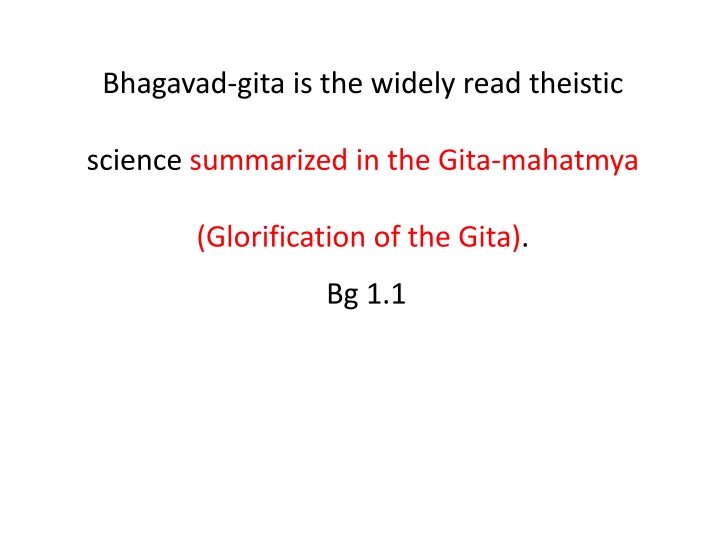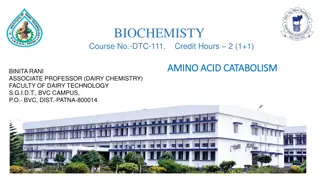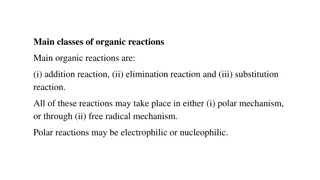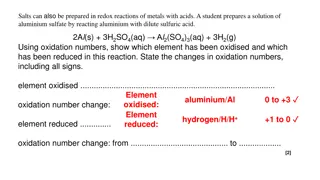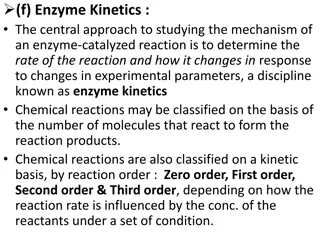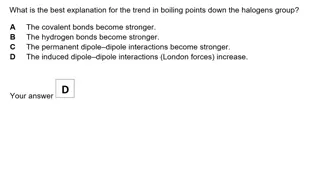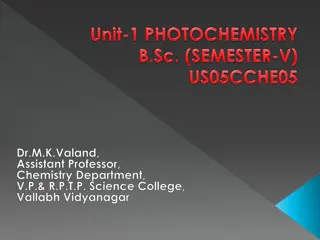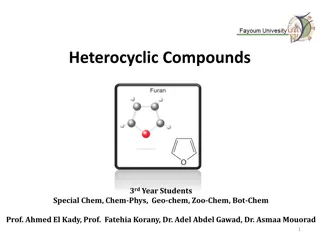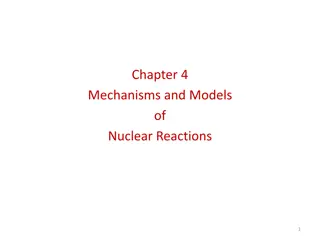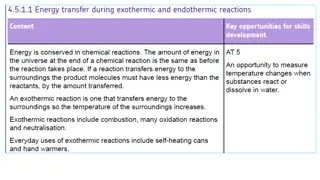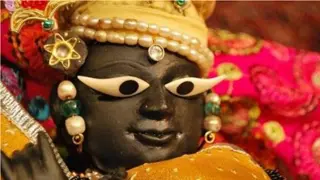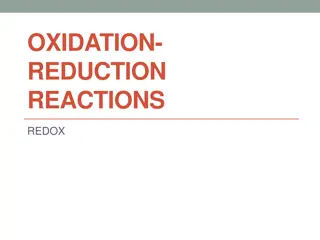Sinful Reactions in Bhagavad Gita
The Bhagavad Gita presents a profound discourse on various aspects of life, including the nature of sinful reactions and the significance of surrendering to Lord Krishna. Through insightful verses and teachings, it elucidates the stages of sinful reactions and how genuine surrender can help one transcend suffering. Dive into the Gita's wisdom to comprehend the transformative power of devotional service and the protection offered by Krishna from the repercussions of sinful actions.
Download Presentation

Please find below an Image/Link to download the presentation.
The content on the website is provided AS IS for your information and personal use only. It may not be sold, licensed, or shared on other websites without obtaining consent from the author.If you encounter any issues during the download, it is possible that the publisher has removed the file from their server.
You are allowed to download the files provided on this website for personal or commercial use, subject to the condition that they are used lawfully. All files are the property of their respective owners.
The content on the website is provided AS IS for your information and personal use only. It may not be sold, licensed, or shared on other websites without obtaining consent from the author.
E N D
Presentation Transcript
Bhagavad-gita is the widely read theistic science summarized in the Gita-mahatmya (Glorification of the Gita). Bg 1.1
Response Questions: Why does Krishna tell us to abandon all varieties of religion? What does it mean Krishna will protect us from our sinful reactions? Does surrender mean to chant Hare Krishna or to read Bg?
1. Understand the different sinful reactions and make sense of the terminology. 2. When does suffering stop? 3. How does surrendering help us?
Understand the different sinful reactions and make sense of the terminology
3 stages of sinful reaction: Phalonmukha: the fruit of sin (sinful action & suffering) Kuta: the potential for sin (ignorance) Bija: the seeds of sinful desires
aprarabdha-phalam papam kutam bijam phalonmukham kramenaiva praliyeta visnu-bhakti-ratatmanam "There are different stages of dormant reactions to sinful activities to be observed in a sinful life. Sinful reactions may be just waiting to take effect [phalonmukha], reactions may be still further dormant [kuta], or the reactions may be in a seedlike state [bija]. In any case, all types of sinful reactions are vanquished one after another if a person engages in the devotional service of Lord Visnu Madhya 15.169 purport
Thus a fully surrendered, sincere devotee immediately receives relief from all kinds of sinful reactions. There are three stages of fructification for sinful activity. At one stage, one commits the sinful act, before that the seed of this act exists, and before that there is ignorance whereby one commits the sin. Suffering is involved in all three stages. However, Krsna is merciful to His devotee, and consequently He immediately nullifies all three stages -- the sin, the seed of sin and the ignorance that leads one to sin. The Padma Purana confirms this: aprarabdha-phalam papam kutam bijam phalonmukham kramenaiva praliyeta visnu-bhakti-ratatmanam Madhya 17.95
As explained in the twenty-eighth verse of the Seventh Chapter, a person who has completely ended the reactions of all sinful activities and who is fully engaged in pious activities, being freed from the duality of this material world, becomes engaged in devotional service to the Supreme Personality of Godhead, Krsna. In other words, those who are actually engaged in the devotional service of the Supreme Lord are already freed from all reactions Bg 9.2 (pg 451)
In fact, everyone is suffering the pangs of separation from Krsna. Because the conditioned soul imagines that he has no eternal relationship with Krsna, he is unable to ascertain that all his miseries are due to this separation. This is maya, or "that which is not." Actually, to think that misery arises from anything other than separation from Krsna is to be in illusion. So when a pure devotee sees living entities suffering within this world, he correctly feels that just as he is suffering because of separation from Krsna, all other living beings are also suffering from separation from Krsna. The difference is that a pure devotee correctly ascertains the cause of his heartbreak whereas the conditioned soul, bewildered by maya, is unable to understand his eternal relationship with Krsna and the unlimited pain arising from neglect of that relationship SB 11.2.45
See Bg 7.28 (first paragraph) This elevation is possible in Krsna consciousness in the association of pure devotees, for in the association of great devotees one can be delivered from delusion. Bg 7.28
See SB 3.25.23 AND SB 3.25.24 (last para)
We should note, however, that when a devotee falls into a miserable condition in this way, it is not due to past impious activities, known as karma-phala; the poverty of the devotee is a creation of the Personality of Godhead. Similarly, when a devotee becomes materially opulent, that is also not due to his pious activities. In either case, whether the devotee becomes poorer or richer, the arrangement is made by the Supreme Personality of Godhead. This arrangement is especially made by Krsna for His devotee just to make him completely dependent upon Him and to free him from all material obligations. He can then concentrate his energies, mind and body -- everything -- for the service of the Lord, and that is pure devotional service. . K.B 88: The Deliverance of Lord Siva
Another question may be raised: What is the difference between a devotee and a common man, since both are put into different kinds of happy and distressful conditions -- the devotee by the arrangement of the Personality of Godhead, and the common man as a result of his past deeds? How is the devotee any better than the ordinary karmi ? The answer is that the karmis and the devotees are not on the same level. In whatever condition of life the karmi may be, he continues in the cycle of birth and death because the seed of karma, or fruitive activity, is there, and it fructifies whenever there is an opportunity. By the law of karma a common man is perpetually entangled in repeated birth and death, whereas a devotee's distress and happiness, not being under the laws of karma, are part of a temporary arrangement by the Supreme Lord which does not entangle the devotee KB 88: The Deliverance of Lord Siva
When a devotee is put into a situation of distress, his devotional activities are accelerated. Therefore, to show special favor to a devotee, the Lord sometimes puts him into distress. KB 88: The Deliverance of Lord Siva
"A person who has developed detachment can give up the bondage of material society, friendship and love, and a person who undergoes great suffering gradually becomes, out of hopelessness, detached and indifferent to the material world. Thus, due to my great suffering, such detachment awoke in my heart; yet how could I have undergone such merciful suffering if I were actually unfortunate? Therefore, I am in fact fortunate and have received the mercy of the Lord. He must somehow or other be pleased with me." [ SB 11.8.38 ]
